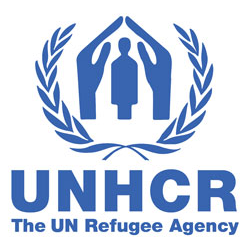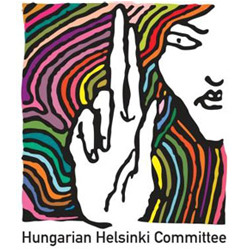Main Debates
- Distribution mechanisms v. protection obligations.
- Who controls the identity of the asylum seeker?
- Does the Dublin system provide sufficient safeguards against refoulement?
- Are there risks that asylum seekers will not receive any substantive claim examination in the EU as a result of the Dublin system?
- Can the 'Early Warning Mechanism in the recast Dublin III Regulation' provide for more solidarity and fairer sharing of responsibility for asylum-seekers in the EU?
Main Points
- Solidarity and ’fair sharing of responsibility’ for asylum and refugee protection in the EU
- Allocating responsibility for determining asylum claims
- Implementing Dublin without prior harmonization in asylum policies
- Identity and data protection
EU Documents
- Regulation (EU) No 604/2013 of the European Parliament and of the Council of 26 June 2013 establishing the criteria and mechanisms for determining the Member State responsible for examining an application for international protection lodged in one of the Member States by a third-country national or a stateless person, OJ L 180, 29 June 2013 (Dublin III).
- Regulation (EU) No 603/2013 of the European Parliament and of the Council of 26 June 2013 on the establishment of ’Eurodac’ for the comparison of fingerprints for the effective application of Regulation (EU) No 604/2013 establishing the criteria and mechanisms for determining the Member State responsible for examining an application for international protection lodged in one of the Member States by a third-country national or a stateless person, OJ L 180, 29 June 2013.
- European Commission, Study on the Feasibility and legal and practical implications of establishing a mechanism for joint processing of asylum applications on the territory of the EU, HOME/2011/ERFX/FW/04, 13 February 2013.
- European Asylum Support Office, EASO fact-finding report on intra-EU relocation activities from Malta, July 2012.
- Communication from the Commission to the European Parliament, the Council, the European Economic and Social Committee and the Committee of the Regions on enhanced intra-EU solidarity in the field of asylum, COM (2011) 835, 2 December 2011.
- Report from the Commission to the European Parliament and the Council on the evaluation of the Dublin system, COM, Brussels, 6 June, 2007.
- Convention Determining the State Responsible for Examining Applications for Asylum Lodged in one of the Member States of the European Communities (signed in Dublin 15 June 1990, entered into force 1 September 1997) OJ C254, 19 August 1997.
UNHCR Documents
- UNHCR, ’Observations on Bulgaria as a Country of Asylum’, 2 January 2014.
- UNHCR, ’The Dublin II Regulation. An UNHCR Discussion Paper’, April 2006.
- UNHCR, ’Observations on Greece as a Country of Asylum’, December 2009.
- UNHCR, ’Comments on Dublin II and Eurodac Proposals’, 18 March 2009.
- UNHCR, R on the application of EM (Eritrea) and others v. The Secretary of State for the Home Department: Case for the Intervener, 3 October 2013, UKSC 2012/2072-2075 – concerning returns to EU Member States on the Dublin Regulation and a real risk of inhuman or degrading treatment.
- UNHCR intervention before the Court of Justice of the EU in the cases of N.S. v. Secretary of State for the Home Department in United Kingdom; M.E. and Others v. Refugee Application Commissioner and the Minister for Justice, Equality and Law Reform in Ireland, 1 February 2011, C-411/10 and C-493/10.
Cases
- Abdullahi v Bundesasylamt, C-394/12, Court of Justice of the European Union, 10 December 2013.
- Puid v Germany, C-4/11, Court of Justice of the European Union, 14 November 2013.
- MA and Others v. SSHD, C-648/11, Court of Justice of the European Union, 6 June 2013.
- Halaf v. Bulgarian State Agency for Refugees, C-528/11, Court of Justice of the European Union, 30 March 2013.
- K. v. Austria, C-245/11, Court of Justice of the European Union, 6 November 2012.
- Kastrati v Sweden, C-620/10, Court of Justice of the European Union, 3 May 2012.
- M.S.S. v. Belgium and Greece, Grand Chamber, European Court of Human Rights, 21 January 2011 (see also Section VI.I.2).
- N.S. v. Secretary of State for the Home Department: M.E. & others v. Refugee Applications Commissioner, joined cases C-411/10 and C-493/10, Court of Justice of the Eropean Union, 21 December 2011.
- Petrosian and Others, ECJ, C-19/08, 21 March 2009.
- Asylum and Immigration Tribunal, YI (Previous claims – Fingerprint match – EURODAC) Eritrea v. Secretary of State Home Department, 2007, UKAIT 00054.
- TI v. The United Kingdom, European Court of Human Rights 2000, Third Section Decision as to the Admissibility of Application 43844/98, 12 IJRL, pp. 244–267.
Readings
Core
- P. Mallia, ‘Case of M.S.S. v. Belgium and Greece: A Catalyst in the Re-thinking of the Dublin II Regulation’, Refugee Survey Quarterly, vol. 30, no. 3 (2011), pp. 108-128.
- M. den Heijer, ‘Joined Cases C-411 & 493/10, N.S. v. Secretary of State for the Home Department and M.E. and Others v. Refugee Applications Commissioner, Minister for Justice, Equality and Law Reform, Judgment of the Court (Grand Chamber) of 21 December 2011', Common Market Law Review, vol. 49, no. 5 (2012), pp. 1735-1753.
- P. McDonough and E. Tsourdi, ‘The other Greek crisis: Asylum and EU solidarity’, Refugee Survey Quarterly, vol. 31 no 4, (2012), pp. 67-100.
Extended
- V. Moreno-Lax, ‘Dismantling the Dublin System: M.S.S. v. Belgium and Greece’, European Journal of Migration and Law, vol. 14, no. 1 (2012), pp. 1-31.
- S. Lieven, ‘Case Report on C-411/10, N.S. and C-493/10, M.E. and Others, 21 December 2011’, European Journal of Migration and Law, vol. 14, no. 2 (2012), pp. 223-238.
- ECRE, Forum Réfugiés, ’The Dublin II Regulation: Lives on Hold’, February 2013.
- Jesuit Refugee Service, ’Protection Interrputed: the Dublin Regulation's impact on asylum-seekers' protection’ (the DIASP project), 5 June 2013.
- ECRE, ‘Sharing Responsibility for Refugee Protection in Europe: Dublin Reconsidered’, April 2008.
- ECRE, ’Summary Report on the Application of the Dublin II Regulation in Europe’, March 2006, AD2/3/2006/EXT/MH.
- C. Filzwieser, ‘The Dublin Regulation v. the European Convention of Human Rights – A Non-Issue or a Precarious Legal Balancing Act?’, December 2006.
- Meijers Committee, ’Comments on Dublin and Reception Directive’ (CM0902), 18 March 2009.
- M. Byrne, ‘Fortifying Europe: Poland and Slovakia Under The Dublin System’, in M. Killingsworth (ed.), Europe: New Voices, New Perspectives (Melbourne: Contemporary Europe Research Centre, 2007).
- R. Byrne, ‘Harmonization and Burden Redistribution in the Two Europes’, Journal of Refugee Studies, vol. 16, no. 3 (2003), pp. 336–358.
- E. R. Thielemann, ‘Between Interests and Norms: Explaining Burden-Sharing in the European Union’, Journal of Refugee Studies, vol. 16, no. 3 (2003), pp. 253–273.
See also Section VI.2.3.6 about Biometrics and Databases with regard to EURODAC.
Editor’s Note
An analysis of the Dublin rules should consider the following:
- Are they compatible with the 1951 Geneva Convention and the ECHR?
- What kind of disputes might arise as to how to interpret the Dublin II rules?
- Is Dublin II a burden-shifting mechanism? What can be done to balance its impact on the EU’s external border States?



